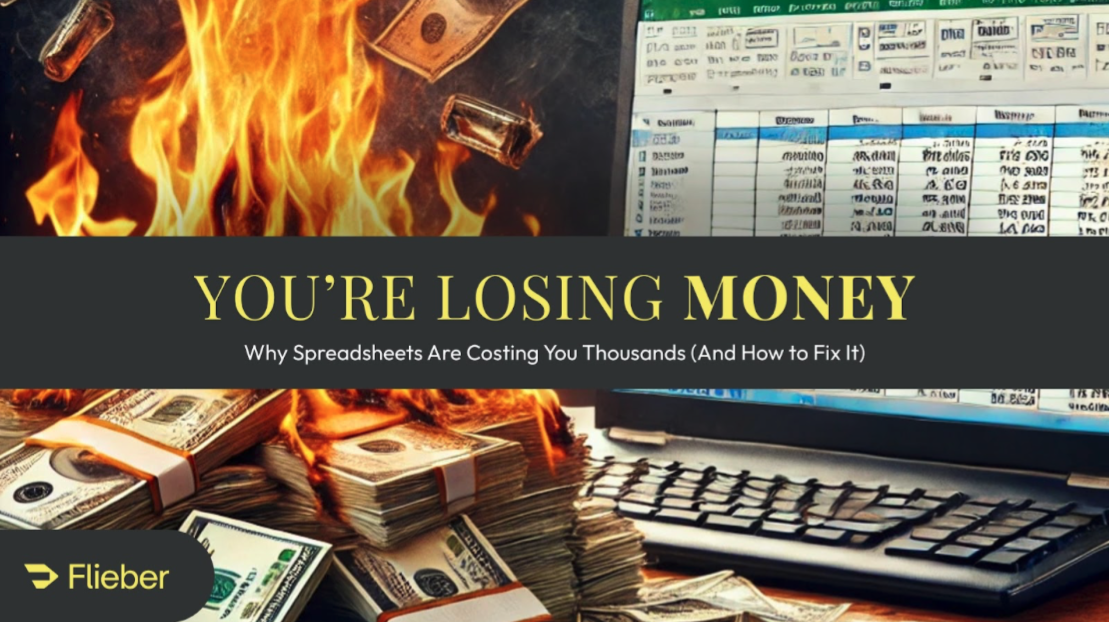When it comes to AI, context is everything. But in the dynamic world of retail, there are countless movements across a range of products. AI can account for those intricacies for you, leading to a more nuanced and accurate forecast — but only if you have the right data to get the quality output you need.
The reality is, in a fast-paced retail environment, you won’t always have the full scope of data you need to get the accuracy you want out of your AI algorithms.
In these cases, it’s better to go with a standard moving average — or even your gut feeling. Here are four of those times when AI simply isn't the best option for your forecasting.
1. When you don’t have enough data
In the words of Rohit Sehgal, Founder and CEO of Vincilium, “AI needs data more than data needs AI.”
According to a study by MIT Sloan, poor data quality can cost as much as 15-25% of total revenue. When you put that in the context of the retail industry’s $2 trillion inventory distortion problem, it’s not hard to see how a misuse of AI in inventory could have a real negative impact on your bottom line.
Here are just some of the reasons to avoid using AI forecasting algorithms when you don’t have sufficient data to feed them:
- Inaccurate predictions: More historical data translates into better forecasts. Without that, your forecasts are far less reliable.
- Increased risk of bias: Limited data can result in bias that overemphasizes trends or patterns due to the lack of diversity in the dataset. This can lead to a vicious cycle of consistently forecasting too much or not enough inventory.
- Lack of robustness: Without enough data points to train the model effectively, your forecasting algorithms won’t perform well when faced with different scenarios or changing market conditions.
- Limited insights: Gaps in your data mean gaps in the insights or correlations that could be valuable for forecasting. Without a rich dataset to draw from, AI will struggle to capture the complexity of your business environment, leading to a much less nuanced forecast.
As the old saying goes, “you are your surroundings”. That’s true for your data, too. Without quality data, a simple moving average will always outperform your AI-based forecast.
2. When your data is faulty or incomplete
If you're like most retailers, using a 30-day moving average makes it relatively easy to understand which forecasting methods are your strongest. The bigger question is: What’s missing from that data set?
Say you’re an apparel brand selling galactic cat t-shirts. You sell approximately the same number of t-shirts every summer. But this summer, there was a 300%+ increase in sales due to the Taylor Swift tour that caused you to go out of stock much sooner than planned.
You can’t get that kind of information from your past data. Even in cases where you technically have the data, the systems that contain it are often difficult to access or full of errors. For example, if you use a 3PL that only sends reports as needed in CSV format, or manually updates a spreadsheet, mistakes are bound to happen.
For a more accurate AI output, aim to include the following information in your dataset:
- Past stockouts
- Major local or national events
- Competitor stockouts
- Viral campaigns
- Seasonality
Plus anything else that plays a major role in your sales and inventory patterns. And if you can’t access the data you need, stick to a moving average — AI models are likely to be just as inaccurate and can lead you to misleading conclusions.
Remember, at the end of the day, there’s a reason ‘Roomba fails’ has over 34M posts on TikTok. Robots are great at a lot of things, but interacting with a complex environment still isn’t one. Only with the right amount of quality data, can you effectively add new layers of complexity to your AI-based forecasting.
3. When you need to make a short-term decision
AI is notoriously clueless about recent events. If you suddenly see a spike in sales because a competitor just went out-of-stock, your algorithm won’t have access to that context. Worse, if you try to run it anyway, you could end up with AI hallucinations that dramatically skew your forecasting.
When you’re planning inventory for something that will be sold two or three days out, you’ll almost always be better off with a more simplistic moving average model — or even your instincts. Here are a few reasons why:
- Lack of real-time information: Without the ability to capture real-time data, AI forecasting algorithms can result in inaccurate predictions and potentially lead to stock-outs or excess inventory.
- Changes in sales trends: AI models may struggle with specific short-term trends, impacting inventory planning for events like flash sales or influencer campaigns.
- Unforeseen events: No matter how sophisticated the algorithm, no AI can match the human mind’s capacity for context. Forecasting algorithms struggle to predict unforeseen events and other intangible factors that have a major impact on your retail operations.
Again, success with AI in inventory planning isn’t just about the quantity of your data, it’s also (and mostly!) about quality. If the period you expect to sell the products you're purchasing or transferring in is short and coming up soon, use a moving average — not an AI model.
Say a product is quickly trending up and you need to replenish to avoid a stockout next week. In this case, the AI algorithms will interpret sudden spikes as outliers, not patterns. They'll only be able to understand that it's a trend when a few days have passed and an identifiable pattern emerges in the data. If you follow AI, you'll likely understock the product.
Since “tomorrow tends to be similar to today”, unless you’re facing major outliers like peak holiday sales events, it's usually going to be better to stick with the simplicity and control of moving averages, rather than AI algorithms that may not be as reactive to the short term trends.
4. When you don’t know how to tell if your AI is performing
Increased complexity means increased accuracy, but with little insight into how your forecasting algorithms were created, it’s hard to know if your AI is working like it should. And the last thing you want to do is scale with an algorithm that’s biased towards over- or understocking.
To protect your sales, maintain your working capital, and achieve profitable growth, you need to make sure your forecast accuracy measures are aligned with your sales and product patterns.
If you don’t have a way to measure the accuracy of your algorithms, it might be better to stick with a more simplistic approach like a moving average.
Your AI outputs are only as good as the data you feed it
No matter what segment of retail you operate in, there is a limitless number of variables that can impact your sales. AI can help you capture it, but only if it’s included in your data set.
In retail, there’s a time and place for every type of forecasting method. The key is to figure out which methods work best, and when to use them. The good news is, the time and energy you invest in AI today will pay off tomorrow. With the power of machine learning, the more your AI learns about the unique patterns of your products, the more accurate your forecasts will get.
Easily connect your sales and inventory data in one central inventory planning platform. Flieber brings all your data together and uses AI algorithms tested on over 3 million SKUs to help you make better inventory decisions.
See step-by-step how Flieber can help you arrive at better decisions, faster. Try it free today and start improving your forecasting.





